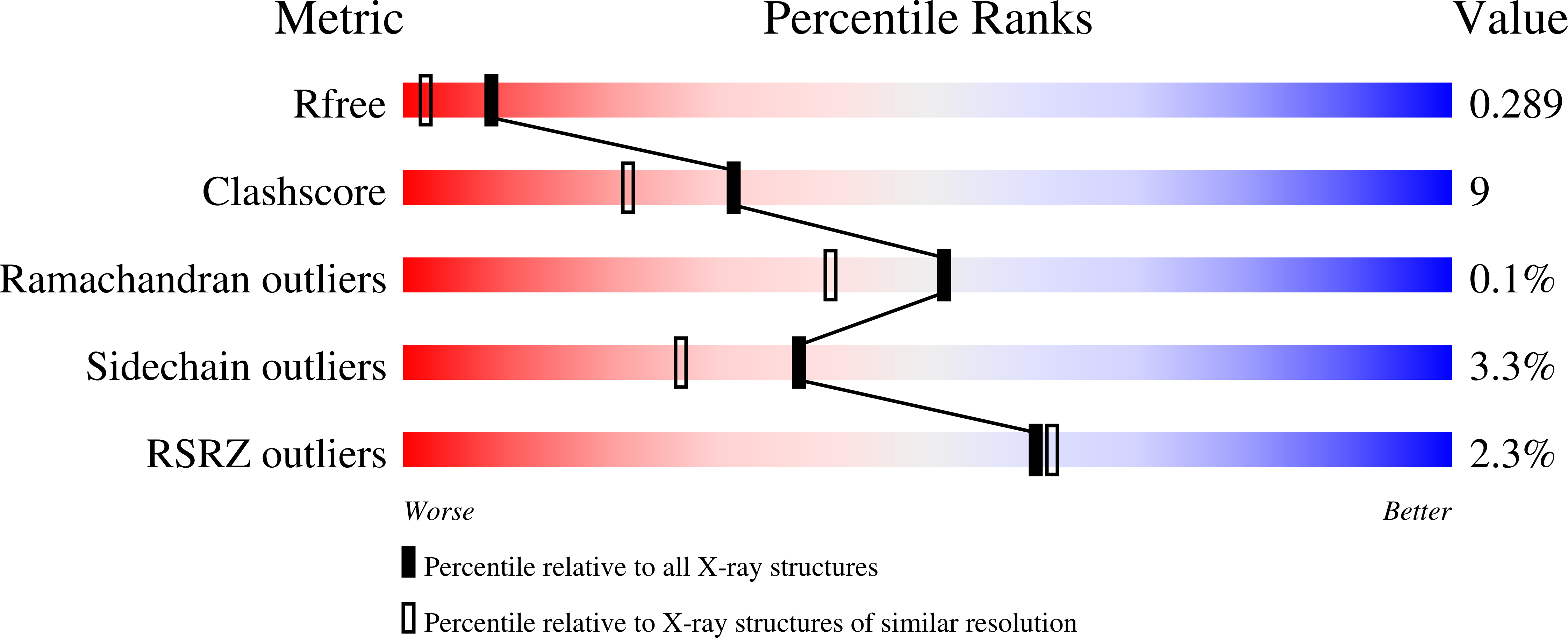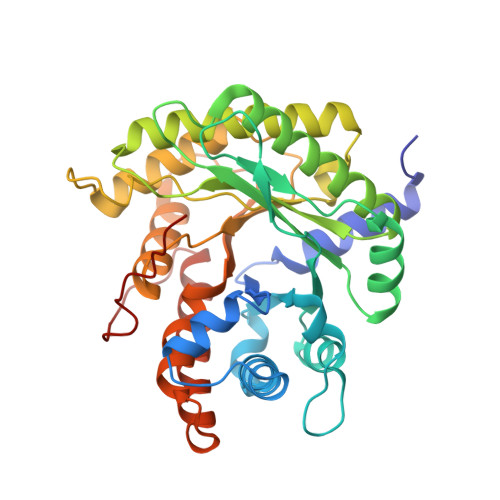Substitutions at a rheostat position in human aldolase A cause a shift in the conformational population.
Fenton, K.D., Meneely, K.M., Wu, T., Martin, T.A., Swint-Kruse, L., Fenton, A.W., Lamb, A.L.(2022) Protein Sci 31: 357-370
- PubMed: 34734672
- DOI: https://doi.org/10.1002/pro.4222
- Primary Citation of Related Structures:
6XMH, 6XML, 6XMM, 6XMO - PubMed Abstract:
Some protein positions play special roles in determining the magnitude of protein function: at such "rheostat" positions, varied amino acid substitutions give rise to a continuum of functional outcomes, from wild type (or enhanced), to intermediate, to loss of function. This observed range raises interesting questions about the biophysical bases by which changes at single positions have such varied outcomes. Here, we assessed variants at position 98 in human aldolase A ("I98X"). Despite being ~17?? from the active site and far from subunit interfaces, substitutions at position 98 have rheostatic contributions to the apparent cooperativity (n H ) associated with fructose-1,6-bisphosphate substrate binding and moderately affected binding affinity. Next, we crystallized representative I98X variants to assess structural consequences. Residues smaller than the native isoleucine (cysteine and serine) were readily accommodated, and the larger phenylalanine caused only a slight separation of the two parallel helixes. However, the diffraction quality was reduced for I98F, and further reduced for I98Y. Intriguingly, the resolutions of the I98X structures correlated with their n H values. We propose that substitution effects on both n H and crystal lattice disruption arise from changes in the population of aldolase A conformations in solution. In combination with results computed for rheostat positions in other proteins, the results from this study suggest that rheostat positions accommodate a wide range of side chains and that structural consequences manifest as shifted ensemble populations and/or dynamics changes.
Organizational Affiliation:
Department of Biochemistry and Molecular Biology, The University of Kansas Medical Center, Kansas City, Kansas, USA.
















